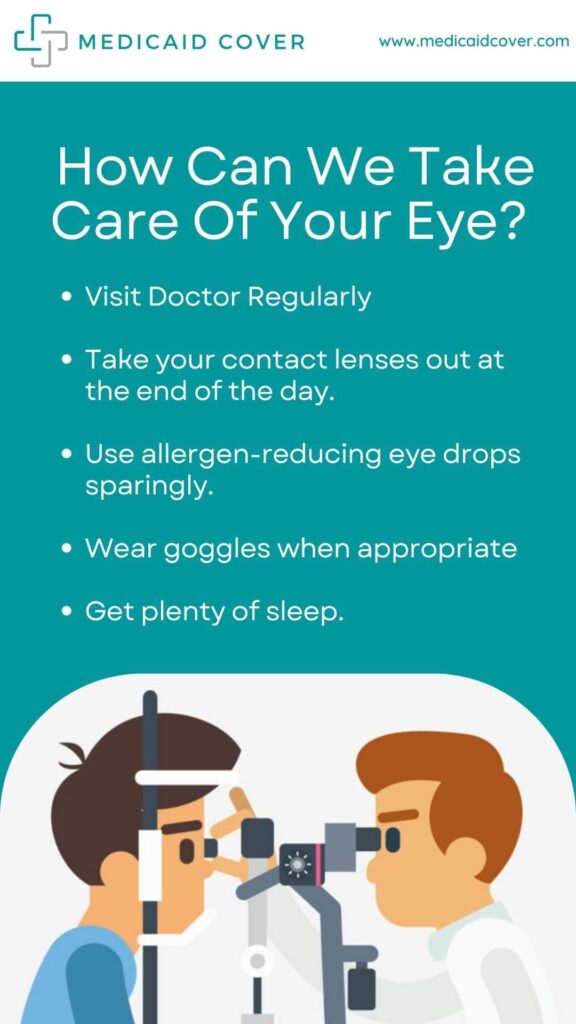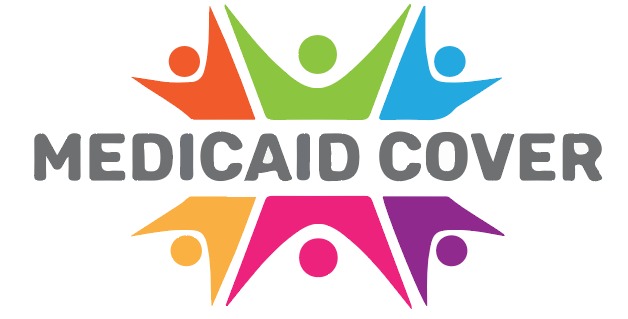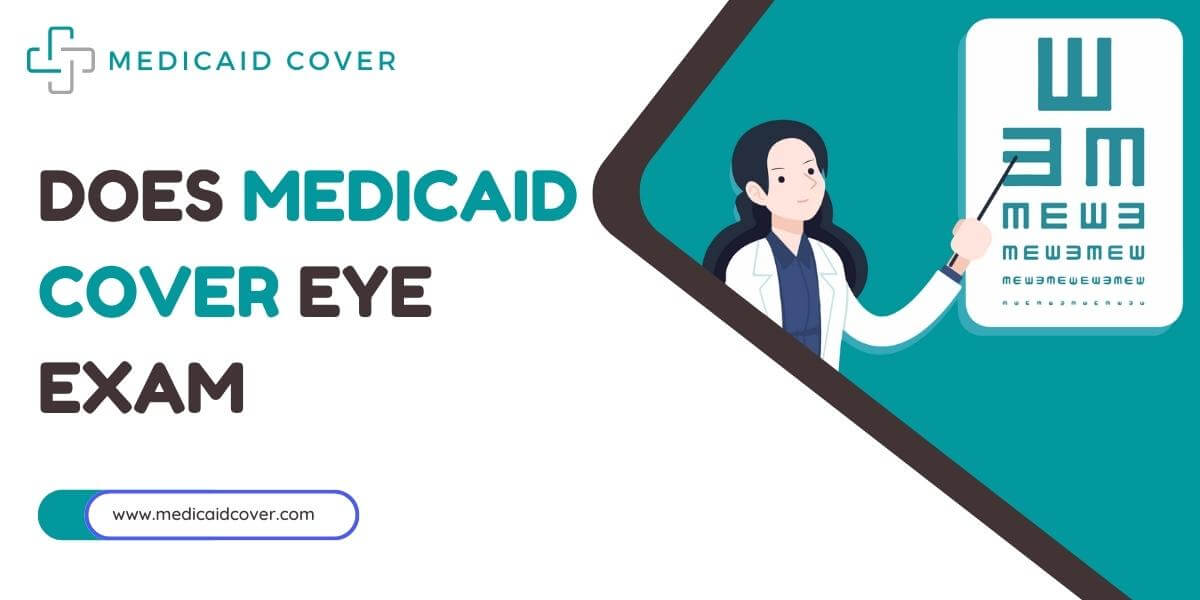Why we need to check Does “Medicaid Cover Eye Exams”? How often do we take special care of our eyes? Nobody right? Ok, who eats carrots as a day for healthy eyesight? Or drink real juice in the morning? None of us, right?
Not just this, but we are confused that our helping hand will help us or not. Our helping hand is Medicaid, and the question everyone asks is, ‘does Medicaid eye exam or not?
How careless we are about our eyesight, even when we know how crucial the sense organ is, which plays an essential role in our life.
Experts advise scheduling routine visits with an optometrist or ophthalmologist to monitor any changes in your eyesight and identify potential health problems as soon as feasible. Additionally, there are several simple everyday activities you may engage in to assist in maintaining the health of your eyes. Find Eye doctors that accept Medicaid Near me.
According to research, proper food, regular exercise, and wearing sunglasses can contribute to maintaining eye health. Learn more about how to safeguard your vision and prevent eye-related health issues by reading on.
Read Also:
Is Your Eyesight Perfect?
A proper set of corrective lenses is only one aspect of taking care of your eyes. You should be aware of the value of your eyes and how to properly care for them every day if you want to enhance your vision.
Protecting your eyes is essential since they allow you to see and navigate in daily life. Your eyes may even be the first part of the body to display conditions like diabetes and high blood pressure.
Countless magazine articles tell us how to care for our health, skin, hair, and feet, but our eyes receive very little attention. And that’s unfortunate, given how extensively our vision is used daily.
Just consider how much your eyes do during the day, from when you wake up until close at night. Because of this, maintaining the health of our eyes is crucial.
Even though maintaining good eye health may seem futile in the absence of vision issues, forming a few simple routines may help you maintain your eyesight and lessen the likelihood that you will experience eye issues in the future.
Read Also:
How Can We Take Care Of Our Eye?
Our eyes are the most sensitive body organ in whole body structure and the most used body organ in the human body. Let’s read more about how to take care of our eyesight in some easy steps.

-
Visit Doctor Regularly
These are skilled professionals with a focus on maintaining your eye health. Optometrists or ophthalmologists are two possible candidates. Have your eyes tested periodically, or keep your eyes healthy if you experience visual issues.
Learn more about your eyes, and consult your eye doctor when you have any questions. You’ll feel more in charge of your health if you learn more about your eyes and how to prevent eye illnesses.
During your 20s and 30s, you should see an eye doctor every five to ten years if you don’t have any vision issues.
Between the ages of 40-80, you should see an eye doctor every 2-4 years if you don’t have any vision issues.
-
Take Your Contact Lenses Out At The End Of The Day
Attempt to wear contacts for no more than 19 hours. Long-term contact lens use can seriously hurt your eyes and permanently destroy your vision.
Unless specifically advised by your Doctor, never go to sleep wearing your contact lenses. Doctors advise taking a frequent vacation from wearing contact lenses for your eyes throughout the night since your eyes need regular supplies of oxygen and lenses hinder the passage of oxygen to the eyes, especially when you sleep.
Unless you are using tightly fitting swimming goggles, avoid swimming while wearing contact lenses. If necessary, it is preferable to use prescription goggles.
-
Use Allergen-Reducing Eye Drops Sparingly
During allergy season, an allergen-reducing eye drop may help “get the red out” and soothe itching, but everyday use can exacerbate the issue. Rebound redness is a condition that can result in increased eye redness because the eyes no longer respond to eye drops.
Eye drops that reduce allergies work by lowering blood flow to the cornea, depriving it of oxygen.
Therefore, even if your eyes no longer feel swollen and scratchy, they are still not receiving enough oxygen from the blood. That’s not ideal because oxygen is necessary for the eye’s muscles and tissues to function. An oxygen shortage can even cause edema and scarring.
Eye drops should be carefully read labels, especially if you wear contacts.
-
Wear Goggles When Appropriate
When working with chemicals, power equipment, or anywhere there are potentially harmful airborne particulates, make sure to use goggles or other protective eyewear. Wearing goggles will prevent injury to your eyes from any large or little things that may strike you in the eye.
-
Get Plenty Of Sleep
Lack of sleep may be a factor in ocular fatigue. Eye irritation, difficulty focusing, dryness or excessive tears, blurred or double vision, light sensitivity, and pain in the neck, shoulders, or back are all signs of eye tiredness.
To help reduce eye fatigue, ensure you get enough sleep each night. The average individual needs 7-8 hours of sleep per night.
Is It Possible Not To Take Any Eye Exams?
We have learned how to care for our eyes; the other thing is to mention that everything is not in our hands.
Many of us have significant health issues due to hormones, genetic reasons, and climate issues, which only affect our health.
During the Pandemic, all of us were busy over the phone, which increased our screen time, and without any issue, it kept on increasing not just in adults but in every age group.
All we do is take precautions, and if someone still has a major eye disease, Medicaid is there to help you.
Read further about how Medicaid cover eye exam.
Does Medicaid Cover Eye Exams?
Whether Medicaid covers eyesight depends on the nature of the treatment, the state where the patient resides, and their age.
Under the Early and Periodic Screening, Diagnostic, & Treatment program, Medicaid covers eye care for kids under 21.
For adults over 21, things are more complicated because each state determines whether and when to cover eye tests, spectacles, contact lenses, and therapy.
Conversely, Medicaid cover eye exams many eye procedures across the nation when they are medically essential. In these situations, the health insurance portion sets the guidelines.
The costs of diagnosing and treating eye problems are paid for children under 21 who qualify for Medicaid’s Early and Periodic Screening, Diagnostic, and Treatment (EPSDT) benefits. This indicates that the price of eye tests and eyewear is covered.
In most states but not all, Medicaid will pay for eye tests for adults over 21. In addition to an eye checkup, several states will pay for a set of glasses or contact lenses.
Why does it matter where you live? Each state sets its own Medicaid benefits but must adhere to federal requirements by offering comprehensive therapies that improve health issues and conditions.
Adult California Medicaid patients, for instance, had their eyeglasses vision benefit reinstated on January 1, 2020, following the cancellation of eyewear coverage due to budget cuts in 2009.
When Medicaid Covers Eye Exams?
Medicaid will occasionally pay for adult eye exams. Your plan’s ability to honor claims and how often depends on the visual testing’s causes and where you live.
It could be challenging to locate a local eye doctor who accepts Medicaid because of the low reimbursement rates and different levels of coverage.
For medically necessary eye treatment, Medicaid functions as health insurance with fairly consistent nationwide coverage.
When calculating refractive errors, Medicaid functions as vision insurance with significantly different benefits from state to state.
-
Optometry Exams
Whether and how frequently Medicaid will cover optometrist exams depends on the state regulations where you live. Refractive errors, or the inability to view an object at a certain distance, are a specialty of an optometrist.
The frequency of optometry sessions and whether refractive eye examinations are supported vary by state. The charts show the advantages for adults (over 21) without a history of sickness or eye surgery.
-
Ophthalmology Exams
Regardless of the eye benefits supported in your state, Medicaid is likely to cover ophthalmology tests nationwide under the health insurance component for medically required conditions.
Medicaid covers adult dental and vision treatment when it is medically required (i.e., when the service is used to diagnose or treat an injury, a disease, or its symptoms).
An ophthalmologist is a doctor who focuses on identifying and managing eye conditions of a medical origin. Your plan might not adhere to the above timetable if you have been diagnosed with one of these disorders; instead, it might pay for yearly tests.
- Amblyopia
- Cataracts
- Diabetic Retinopathy
- Dry Eye Syndrome
- Glaucoma
- Macular Degeneration
- Ocular Nevis
- Retinal Detachment or Tear
Who Accepts Medicaid For An Eye Exam?
As mentioned earlier, we do have too much confusion about does Medicaid cover eye exams. Let’s read it further to know which states and respective considerations are required to appear for an eye exam.
As long as the schedule covers it, many eye care facilities accept Medicaid for an eye exams.
If, for example, your state only pays for one eye checkup every three years and you book an appointment after two years, that eye test won’t be reimbursed. There are few exceptions, like if you have a condition requiring more frequent exams.
Use All About Vision’s Doctor Locator to look for eye care facilities that accept Medicaid in your area. This tool also allows you to search for eye care facilities that take your vision insurance. After viewing the list of nearby eye doctors who take Medicaid, you may make an appointment.
When Medicaid Covers Vision Care?
Medicaid sometimes pays for vision care, including prescription eyewear (glasses, contacts, frames, and vision rehabilitation).
However, the rewards might depend on your state’s laws and the cause (refractive errors versus medically necessary). Prescription glasses to correct refractive problems are occasionally covered by Medicaid. Again, perks and frequency are determined by your state’s regulations.
Eye Glasses
How frequently Medicaid will cover prescription eyeglasses to correct refractive problems depends on the laws in your state. The options for your response are: never, once a year, every two to five years, or once in a lifetime.
The frequency of updated lenses typically coincides with the frequency of exams. A few states, though, have different laws regarding spectacles.
Frames
If your state offers vision coverage, your Medicaid plan might cover eyeglass frames that meet certain criteria.
Replacement frames are required for valid medical requirements.
- Child Growth
- Metal allergy
Standard frames, which are the most affordable option.
Non-standard frames qualify.
- Sunglasses
- Lenses
Diabetics
Regardless of whether your state offers vision care, Medicaid could cover the cost of eyeglasses for diabetics across the nation for three reasons.
A medical condition covered by the health insurance module is diabetes.
The glasses do not rectify refractive flaws; instead, they magnify and filter light.
The gadgets might be the most affordable therapy option.
Get a note of medical necessity from your ophthalmologist stating how your diabetic retinopathy impairs your vision. Precertification from the carrier is required.
Contact Lenses
Regardless of whether your state offers vision coverage, Medicaid normally does not cover prescription contact lenses for adults. Patients sometimes ask for contact lenses for cosmetic reasons, even though they are a more expensive refractive error treatment than spectacles.
Medicaid, therefore rarely covers benefits due to these factors. Every rule, however, has an exception.
Contact lenses are used when necessary because the patient cannot use glasses. People, for instance, with deformed noses or absent ears.
Contact lenses that serve as prosthetics are sometimes required by medicine and fall under the health insurance category.
How Much Does An Eye Exam Cost Under Medicaid?
Depending on your state, the payment for an eye exam might range from $0 to $15. The majority of states also distinguish between adult and kid copays.
Depending on the state, a separate price for your glasses or your copay may cover your eyeglasses. Check out your state’s Medicaid vision benefits for more information on what is covered and what you anticipate paying.
How Often Does Medicaid Pay For An Eye Exam?
The suggested schedule for screenings for vision and hearing in children and adolescents must be followed by all states.
A dedicated pediatric health group, such as the American Academy of Pediatrics, determines the required medical practice level for all screenings.
The frequency of covered eye exams for adults over 21 varies by state of residence. On average, an eye checkup is covered every two to three years.
Contact a Medicaid representative in the area that your state has selected to obtain the most precise information regarding Medicaid procedures in your state.
Conclusion : –
The suggested schedule for screenings for vision and hearing in children and adolescents must be followed by all states.
We hope that the most common confusion is clear, which is ‘does Medicaid cover eye exams, so what are you waiting for? Start taking serious care of your health and especially your eyes.
Most states will pay for regular eye exams, albeit they can be less frequent than those covered by other types of health insurance.
Keeping your eyes healthy can be greatly aided by protecting your whole health! It’s crucial to make healthy decisions and look after oneself.
Remember that healthy behaviors like eating well and exercising can reduce your risk for illnesses and disorders like diabetes or high blood pressure that might cause eye or vision difficulties.
Exercise regularly can help stave off disorders like diabetes. You can lower the risk of developing major eye conditions like glaucoma and macular degeneration by engaging in at least 30-40 minutes of physical exercise or activity three times each week.
Frequently Asked Questions
How many eye exams is Medicare going to pay for?
Every three years, you are only eligible for one medicaid cover eye exams. Private health insurance may be able to pay for you to visit more frequently if you want to maintain good eye health. The OAA recommends that you go at least once every two years. Medicare only pays for an eye exam. You will typically have to cover the cost of any necessary therapy or spectacles.
Is the price of your eye exam covered by Medicare?
How Much Will an Eye Exam Cost Under Medicare? As previously indicated, Medicare normally does not pay for routine eye exams, but some high-risk patients are exempt. Without insurance, eye exams often cost between $50 and $70. Insurance coverage does not cover routine eye exams, although some may have additional copyas.
What is an eye exam covered by Medicare?
Medicare does not cover routine eye care procedures like annual eye exams. However, Medicare does pay for some eye care procedures if you have a chronic eye problem like cataracts or glaucoma. Surgical techniques to aid in restoring the function of the eye as a result of persistent eye problems are covered by Medicare.
Hope you enjoy the article Does Medicaid Cover Eye Exams, if you like it please share it with your loved once.

